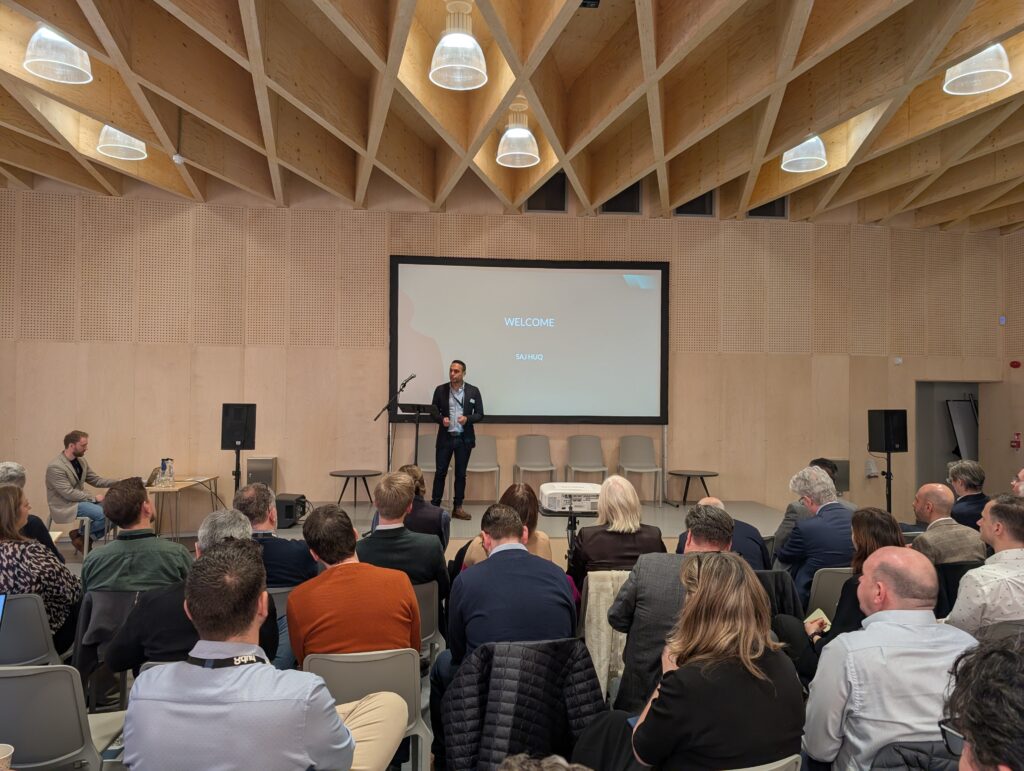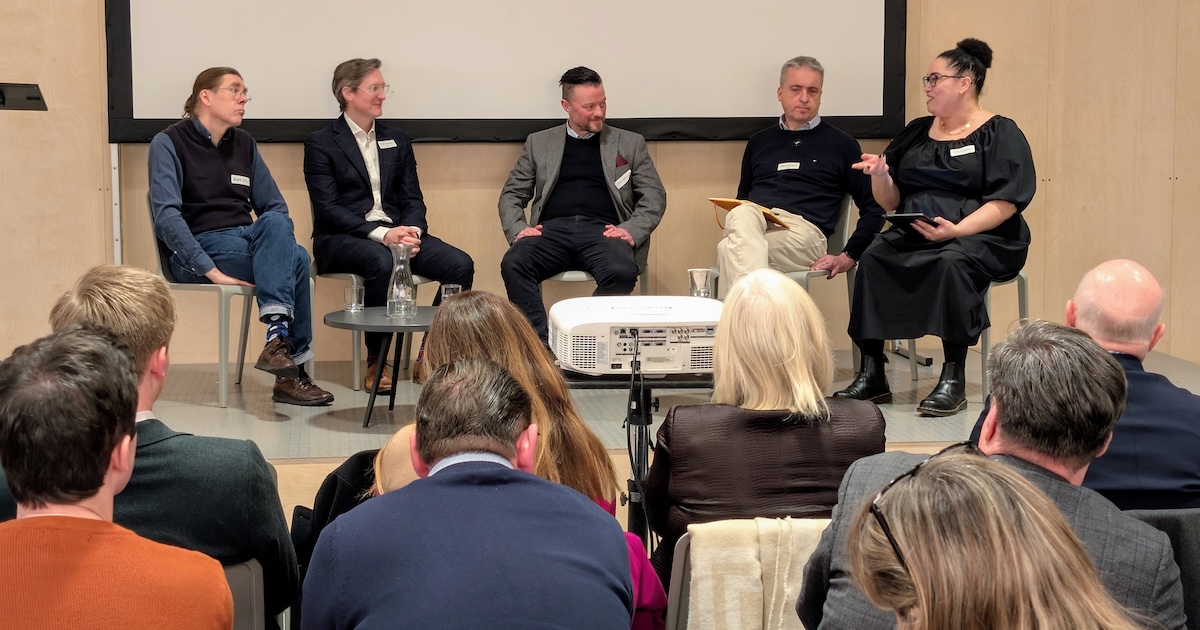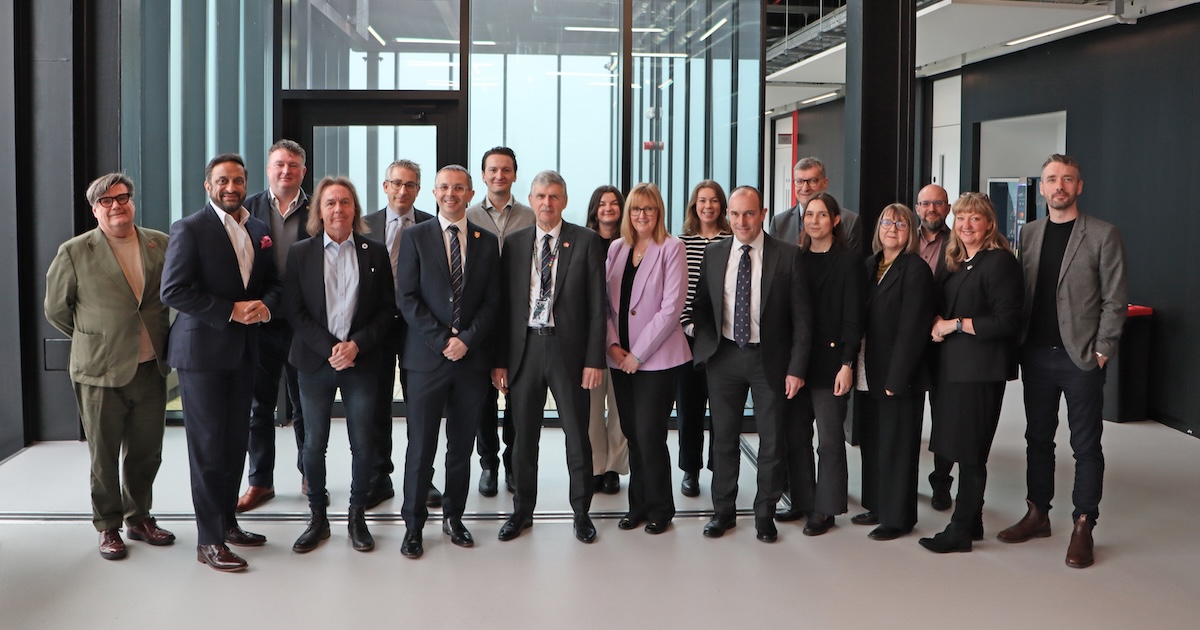In mid-February, we orchestrated an important assembly at our Hub8 by Plexal MX Innovation Centre in Cheltenham, which opened in summer with a mission to fuel business growth, nurture the tech ecosystem and connect community as part of a collaboration with Cheltenham Borough Council, building on the town’s position as one of the UK’s thriving clusters.
Discussing the launch, Plexal CEO Andrew Roughan said: “The MX opening fits in seamlessly with the Cheltenham Borough Council and HBD-led Golden Valley development to bring companies and communities together. Across the UK, aligning our universities, large tech companies, local authorities and startups to a clear mission for growth, we’ll create the conditions for innovation clusters to thrive. This in turn will contribute significantly to the country’s economic progress and prosperity.”
And it’s that cluster component we explored at our event, Powering progress: How innovation clusters supercharge regional growth. Notably, we covered how alignment between initiatives in Cheltenham, Lancashire, Greater Manchester and Milton Keynes can add significant momentum and benefit on a national scale.
Kicking off proceedings, Saj Huq, CCO at Plexal, said: “We’ve brought together a broad community who are bringing national perspectives to discuss how we can supercharge innovation clustering and drive collaboration between industry, academia and government.
“Plexal has worked on this since 2017 when we established an ecosystem around the UK. Innovation clustering can be a platform for supercharging growth, but also increasingly the platform for supercharging our national security as well.
“What we’re seeing in partnership with our government colleagues is a growing symbiosis between those dual objectives to drive security and resilience alongside the opportunity to support growth.”

Saj proceeded to introduce keynote speaker, Alex Van Someren, Chief Scientific Adviser for National Security.
The importance of an innovation ecosystem and clusters around secure government
Alex began by referring to himself as a “cluster resident”. “I grew up in Cambridge – a legendary place for the development of technology,” he said, “and these days still has two slightly unmixed worlds, a life sciences innovation cluster and IT innovation cluster, two things that are starting to come together in interesting ways.”
Painting the audience a mental image by recalling Silicon Valley’s transformation from orchards to tarmac, Alex noted that Cambridge has done a better job of positioning livability within its cluster propositions. His argument is that innovation clusters needn’t be soulless places to work but where people will also make their homes, an approach the UK more widely can adopt.
– “Most new technology doesn’t now get invented inside large corporations; it gets invented in SMEs“
Golden Valley is a prime example of this, self-described as a “vibrant and pioneering garden community, integrating hi-tech businesses with new homes and community uses, alongside the highest standards of environmental sustainability, design and place-making.”
Alex pointed to other developments such as the government’s announced plans for the Oxford-Cambridge Growth Corridor of road and rail improvements to speed up transport from one to another and places in the middle such as Milton Keyes. This is an initiative that Chancellor Rachel Reeves MP has said “could add up to £78bn to the UK economy by 2035, driving investment, innovation and growth.”
He noted that for decades much technological innovation within government has come from government investments but suggested that trend has passed with technologies such as AI. “It’s now the huge tech corporations leading the charge around cloud and AI and it’s that change we really need to pay attention to if we’re working within government or the wider public sector,” said Alex.
– VC funding in the defence, security and resilience sector climbed to a record high of $5.2bn in 2024
“It’s no longer realistic to believe we’re going to invest our way through this from the public sector side. We can’t compete with corporations who, in many cases now, have turnover that matches the GDP of some nations. So, we’re not going to spend our way into competition – instead, what we need to do is to collaborate with them more.
“That’s also true at the emerging tech end of the pipeline. Most new technology doesn’t now get invented inside large corporations; it gets invented in SMEs. And the corporations that used to have large research laboratories tend to now acquire their way to access new innovations.
“The good news is if you’re an entrepreneur building a startup with desirable new technology, it provides an exit path to allow you to sell your business and become part of something larger.
“And the good news for customers like us in government is it allows early visibility of those new technologies and to understand how those technologies could help us to deliver our missions.”
Having covered the role of innovators themselves within the tech ecosystem, Alex also highlighted the important role of investors within national security and defence. In fact, he signalled new data from Dealroom and the NATO Innovation Fund, which found VC funding in the defence, security and resilience sector climbed to a record high of $5.2bn in 2024.
Alex called this a “really helpful” step forward with the additional private sector funding supporting business builders by complementing existing government spending.
“Now we’re moving into a phase where this collaboration across all these different communities will enable us to access the tech we need,” he opined. “It also gets us closer to the funding that technology needs to come out of the lab and get closer to the mission – without having to be done from one centre. At the same time, we must face the fact that very large tech operations are going to dominate for some time. We must build relationships.”
Ruby Motabhoy, Plexal’s Senior Lead for National Security, took to the stage next to chair a panel exploring the role of local government and academic leaders to understand how they work to drive positive outcomes for the communities and clusters they serve. With perspectives from different pockets of the UK, Ruby was joined by:
- Gareth Edmundson, Chief Executive at Cheltenham Borough Council
- Mike Johnson, Technology Strategy Advisor at Milton Keynes City Council
- Dion Williams, Director of Research, Enterprise & Innovation at Lancaster University
- Alex van Someren, Chief Scientific Adviser for National Security
Cheltenham – Shaping a self-sustaining ecosystem
Sharing the approach from Cheltenham, Gareth described the town’s council as “interventionist”. “We fundamentally believe local government has a strong play in how we shape place,” he said. “Part of the reason the council invested in Golden Valley is to try and create the preconditions to shape a self-sustaining ecosystem. By bringing in our development partner HBD, we’re confident that by having that local government intervention, we can try and correct any sense of market failure to create a fabulous place that isn’t like a business park but a sustainable community.”
Building on his perspective for clusters, Gareth added the importance of going beyond place as a site and assessing the needs around people – skills, services, schools and so on – to be attractive beyond just serving as a place of work but somewhere to live. “We’re motivated by future growth, not profit, and can use our proud heritage of 70 years associated with GCHQ and bring in academic partners like the University of Gloucestershire,” he added. “This is how we think about creating a self-sustaining ecosystem that never ends. We’re always going to be in the business of shaping our place.”
Milton Keynes – Centre of the Oxford-Cambridge Arc
Taking the conversation on a 70-mile drive from Gloucestershire to Buckinghamshire, Ruby noted that while Cheltenham is home to many SME founders familiar with one another, accompanied by a renowned government backdrop in GCHQ, Milton Keynes has different components.
“Milton Keynes has a large private sector such as Santander and Red Bull and from a national security element you have HMGCC, which was a secret organisation for 85 years with one year in the open,” Ruby detailed, offering a visual on how it’s structured compared to other clusters.
With those differences in mind, she encouraged Mike to discuss how Milton Keynes has established itself as a location for startups and founders to explore. He noted that there’s lots going on in Milton Keynes – conceding much of it has been under the radar until now. This includes ensuring startups can find mentors, customers and investors through to enabling businesses to collaborate and generate market opportunity, as well as ensuring national security can come from behind the fence to work with tech organisations.
“The role of the council is to help provide the connective tissue that joins the tech ecosystem together,” he said. “And being in the centre of the Oxford-Cambridge Arc, we’ve really got to understand what our role is. It’s not to be competitive with Oxford and Cambridge but to leverage the advantages of being in the middle. With space to grow, we bring easy planning opportunities, land, great access to London and we’re in a strong place to evolve ourselves as a cluster.”
Lancaster – Collaboration through the five-stakeholder model
Heading 200 miles northbound on the M1 and M6, our next destination is Lancaster. Ruby turned to Dion to hear his perspective on lessons from the North West, bringing in insights that incorporate rural areas as much as cities.
Dion started by noting the role of universities acting as forces to draw prosperity of a place, a trend that Lancaster has increasingly pushed in the 60 years since it was founded. “There’s a North West supercluster emerging and what we have is the combination of existing place, major transformation and investment – particularly with GCHQ in Manchester and the multimillion-pound investment in the National Cyber Force in Samlesbury, Lancashire,” he explained.
He went on to share Lancaster University is a true believer of collaboration and adopts the five-stakeholder model, incorporating academia, government, corporates, investors and entrepreneurs to fully unlock innovation.
“What we’re sat on is a generation of transformative opportunities that moves the discussion from city-centric to a more distributed innovation district,” Dion said. “Greater Manchester is the fastest-growing digital tech cluster in Europe, we have the third largest cyber cluster in the UK and fourth biggest aerospace cluster in the world in Lancashire.”
HMG’s role within these innovation ecosystems
While Cheltenham, Milton Keynes and the North West all have UK Government sites locally, Cambridge doesn’t – and Alex believes this is an interesting scenario. “In these locations, we’re trying to help them to get out from behind the barbed wire and engage with local communities,” he said.
Sharing more on these clusters, Alex continued: “On the other hand in places like Cambridge and Oxford where there aren’t those local institutions, the reasons these places are important is because we need spaces where people can meet in the middle. That’s the case in Cheltenham and Milton Keynes and, while this isn’t yet the case in Oxford and Cambridge, it’s an interesting opportunity to help provide a point of presence for government departments. And that difference is why it’s important that people from each of these communities participate in this conversation – there’s a huge amount to be learned from each other.”
Concluding the discussion, Ruby said: “For decades our national security institutions have worked behind barbed wire away from external eyes. And while secrecy will always be an essential part of keeping the intelligence community safe, it’s been hugely valuable to bring some of these conversations into the open. Being able to outline some of the security challenges that will most benefit from non-traditional partners, dual-use technologies and cross-sector collaboration across clusters is a huge leap forward and I’m excited to see what comes next.”


